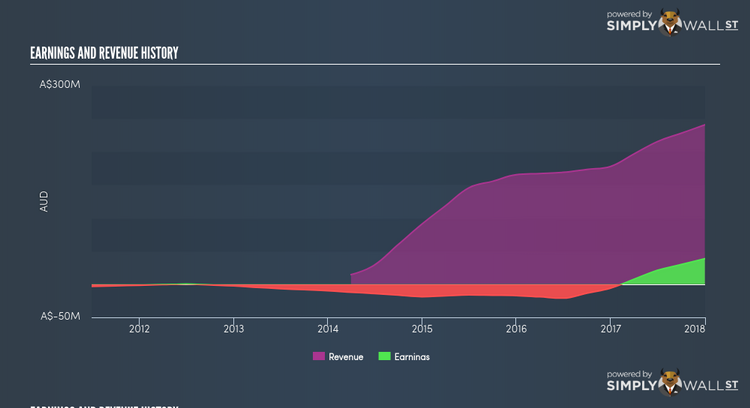Why You Need To Look At This Factor Before Buying Base Resources Limited (ASX:BSE)

If you are a shareholder in Base Resources Limited’s (ASX:BSE), or are thinking about investing in the company, knowing how it contributes to the risk and reward profile of your portfolio is important. Every stock in the market is exposed to market risk, which arises from macroeconomic factors such as economic growth and geo-political tussles just to name a few. This is measured by its beta. Different characteristics of a stock expose it to various levels of market risk, and the broad market index represents a beta value of one. A stock with a beta greater than one is expected to exhibit higher volatility resulting from market-wide shocks compared to one with a beta below one.
See our latest analysis for Base Resources
What does BSE’s beta value mean?
Base Resources’s beta of 0.06 indicates that the company is less volatile relative to the diversified market portfolio. The stock will exhibit muted movements in both the downside and upside, in response to changing economic conditions, whereas the general market may move by a lot more. BSE’s beta implies it may be a stock that investors with high-beta portfolios might find relevant if they wanted to reduce their exposure to market risk, especially during times of downturns.
Does BSE’s size and industry impact the expected beta?
BSE, with its market capitalisation of AU$315.72M, is a small-cap stock, which generally have higher beta than similar companies of larger size. In addition to size, BSE also operates in the metals and mining industry, which has commonly demonstrated strong reactions to market-wide shocks. Therefore, investors may expect high beta associated with small companies, as well as those operating in the metals and mining industry, relative to those more well-established firms in a more defensive industry. This is an interesting conclusion, since both BSE’s size and industry indicates the stock should have a higher beta than it currently has. A potential driver of this variance can be a fundamental factor, which we will take a look at next.
Is BSE’s cost structure indicative of a high beta?
An asset-heavy company tends to have a higher beta because the risk associated with running fixed assets during a downturn is highly expensive. I test BSE’s ratio of fixed assets to total assets in order to determine how high the risk is associated with this type of constraint. With a fixed-assets-to-total-assets ratio of greater than 30%, BSE appears to be a company that invests a large amount of capital in assets that are hard to scale down on short-notice. Thus, we can expect BSE to be more volatile in the face of market movements, relative to its peers of similar size but with a lower proportion of fixed assets on their books. However, this is the opposite to what BSE’s actual beta value suggests, which is lower stock volatility relative to the market.
What this means for you:
You could benefit from lower risk during times of economic decline by holding onto BSE. Take into account your portfolio sensitivity to the market before you invest in the stock, as well as where we are in the current economic cycle. Depending on the composition of your portfolio, BSE may be a valuable stock to hold onto in order to cushion the impact of a downturn. What I have not mentioned in my article here are important company-specific fundamentals such as Base Resources’s financial health and performance track record. I urge you to complete your research by taking a look at the following:
Future Outlook: What are well-informed industry analysts predicting for BSE’s future growth? Take a look at our free research report of analyst consensus for BSE’s outlook.
Past Track Record: Has BSE been consistently performing well irrespective of the ups and downs in the market? Go into more detail in the past performance analysis and take a look at the free visual representations of BSE’s historicals for more clarity.
Other High-Performing Stocks: Are there other stocks that provide better prospects with proven track records? Explore our free list of these great stocks here.
To help readers see pass the short term volatility of the financial market, we aim to bring you a long-term focused research analysis purely driven by fundamental data. Note that our analysis does not factor in the latest price sensitive company announcements.
The author is an independent contributor and at the time of publication had no position in the stocks mentioned.

